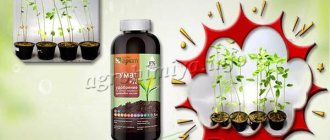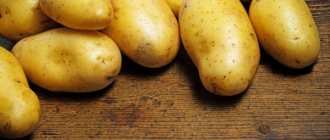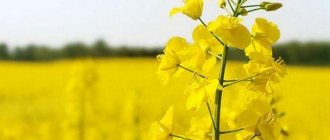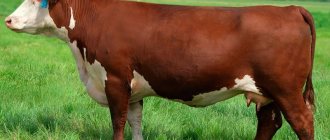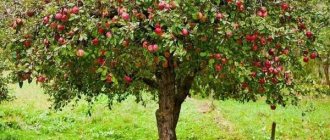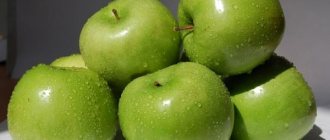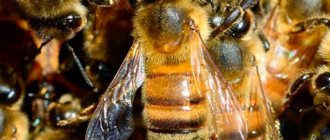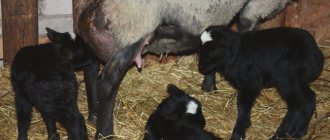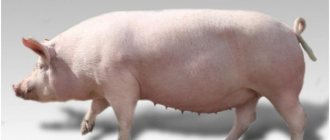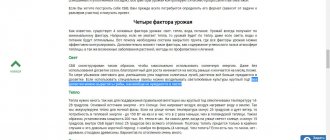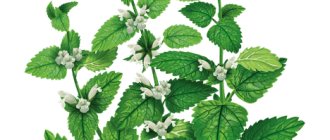What is peat, its composition and properties
Peat is a mineral formed by the decomposition of plants in wetlands.
The humidity in such places is high, and air does not penetrate into the depths of the swamp. Therefore, plants do not decompose completely, forming layers of valuable natural material. Peat composition:
- carbon 50-60%;
- hydrogen 5%;
- oxygen 1-3%;
- nitrogen 3%;
- sulfur 1%.
When burned, peat releases 24 MJ/kg of heat energy. The age of mineral deposits is 5-10 thousand years. But only 60 percent of wetlands produce peat.
Peat properties:
- dark brown or brown color;
- brittle;
- softer than glass;
- lighter than water;
- porous;
- absorbs moisture well;
- combustible.
The use of peat is also common. It is used :
- in the form of fuel: only peat with a medium or high degree of decomposition is suitable;
- in gardening as a fertilizer, for the production of peat tablets and cups for seedlings;
- in livestock farming: it is used as bedding for livestock;
- chemical industry;
- medicine.
Fresh peat is highly acidic and is not suitable for application to the soil, as it has a negative effect on plants.
Soil requirements for seedlings
Let's figure out what kind of soil seedlings need. This will help you understand how well the peat meets the requirements.
Here are the properties the soil should have:
- Fertility refers to the content of organic matter and nutrient minerals (potassium, nitrogen and phosphorus), which ensure plant growth and development. Peat contains a lot of nitrogen, but it is often in a form inaccessible to plants. There is little potassium and phosphorus. Fertility directly depends on the degree of decomposition of the material. Therefore, lowland peat is better suited than high-moor peat.
- Balanced composition Seedlings are harmed by both deficiency and excess of microelements. In lowland peat there is an excess of organic matter and nitrogen, while in highland peat there is a significant deficiency. It is recommended to additionally add other components to the mixture. High-moor peat with neutralized acidity is very suitable for such manipulations. The composition of the mixture can be adjusted to suit the needs of any type of seedling.
- Loose structure For normal development of seeds and sprouts, air and water are needed. They are held in the pores of the soil. Peat has high porosity and a loose structure; according to this parameter, the material is completely suitable for seedlings.
- The ability to retain water It is best if the soil absorbs water with nutrients and gradually releases it. In this case, moisture does not stagnate and sludge does not form. This property is typical for high-moor and transitional peat. The liquid is absorbed by plant fibers, and excess is removed through the pores. Lowland soils often silt, so it is recommended to add sand, perlite or vermiculite to it.
- Acidity The soil reaction should approach neutral (pH 6.5-6.8). High peat has a pH of 2.5-3.5, lowland peat has a pH of 4.5-6. Therefore, seeds cannot be planted in it without additional processing.
- Absence of pathogenic microorganisms, eggs and insect larvae Peat is an almost sterile environment. It contains substances with antiseptic properties, and the acidic environment does not promote the proliferation of microorganisms. Insect larvae, which can damage seeds and roots, are also rare. That is why the material is recommended to be added to soil mixtures to prevent black rot and other diseases of seedlings.
- Absence of toxic substances If peat is obtained in an area with normal ecology, it contains no toxic substances. Material that was mined near fields and industrial enterprises may be contaminated. The concentration of harmful elements in such peat is significantly increased, since it absorbs water along with toxic substances (pesticides, herbicides, heavy metals).
- No tendency to overheat . The soil mixture heats up if it contains quickly decomposing organic matter. At 30°C, the roots of the plant may die, and the seeds do not germinate well. Peat contains a lot of organic matter, but decomposition occurs slowly, without heating. Decomposition processes are enhanced in the presence of fresh bird droppings or manure. Therefore, it is recommended to add humus or fermented mullein to the mixture. Black lowland peat heats up more strongly in the sun; it is recommended to cover it with light perlite grains, sawdust or sand.
In many ways, peat is suitable for planting seeds for seedlings and growing them, although it is not without its drawbacks. You will find out further what type of material is better to take.
Types of peat
There are three types of this fossil: high peat, low peat and neutral. They differ in their depth and some properties.
Horse
High peat is formed in the process of interaction and decay of spruce and sphagnum moss with sediments. This top layer is loose, decomposes slowly and contains most of the air.
It is mined in the upper layers of swamps. Often interacts with open air. Mostly composed of sphagnum moss. This moss is light.
Used for the manufacture of filter elements and cleaning systems. Also used as fuel and insulating material.
This peat does not contain weeds and parasites, which is why it is well suited for filling in greenhouses. It is also used as bedding for livestock.
Areas of application of bait - differences between peat
Since the main purpose of consuming fossils is to enrich the land, the high and low types are designed for different types of soil. Horse is used mainly on sandy and clay surfaces to improve fertility. Whereas the use of grassroots peat has a wider purpose. With the help of this type of fertilizing, it will be possible to improve the fertility of loam, sandy soil and clay surfaces.
The riding type is used for preparing greenhouse surfaces before the season, making substrates, creating soil filters and other purposes. Lowland bait, in turn, is suitable for growing seedlings, improving the fertility of any soil, producing complex mineral baits, and more.
The benefits and harms of peat for soil and plants
Indeed, this substrate can bring not only benefits, but also harm.
Summer residents often add peat in large quantities, without paying attention to what type it is. Thus, they risk damaging the soil and the plants growing on it.
Benefit
- At minimal cost it can improve soil characteristics and increase the amount of harvest.
- The use of peat increases the layer of humus in the soil. The land is becoming more fertile.
- Makes the soil porous, facilitating access of air and moisture to plant roots.
- Able to fight unwanted microorganisms, bacteria and fungi.
- Increases and decreases soil acidity, depending on the type of peat.
- Promotes rapid warming of the soil.
- Stops leaching of nutrients.
- It accumulates moisture, thereby moistening the soil, which is good for dry areas.
Peat plays the role of a natural filter for external and underground waters. It rids it of harmful compounds and heavy metals.
Harm
- If applied incorrectly, in dosage, or in combination with some fertilizers, it can reduce plant growth. Sometimes, unwise use of peat can lead to the death of garden crops.
- May cause increased acidity in the soil. This also negatively affects plants. To reduce acidity, peat is mixed with slaked lime (100 kg of peat and 5-6 kg of lime).
- It makes no sense to introduce peat into fertile and loose soil. It won't do any good. In such soil, only 5% of the nutrients from peat will be absorbed.
Due to insufficient watering, peat clumps can shrink, which will lead to drying out of the plant root system.
Peat as a fertilizer for vegetables
I see a big advantage of peat fertilizers is that it is impossible to “over-fertilize” the soil with them. This substance is safe for plants in any quantity. It can be applied both in spring and autumn:
- For digging: 3-4 kg per 1 m2.
- To fertilize perennial shrubs and trees: the mixture is poured in a layer of 5-6 cm, focusing on the circle around the trunk.
Please also pay attention to the following rules:
- For long-cultivated lands: up to 20-30 liters per 1 m2.
- For recently developed areas: up to 50-60 liters per 1 m2.
It is evenly distributed over the surface of the ridge, and then the area is dug up to an approximate depth of 10 cm. Peat fertilizers are especially useful in those areas of the garden where, after thorough watering or heavy rain, an “impenetrable” earthen crust is formed.
After adding the substance, the soil gradually becomes granular and finely lumpy. The air necessary for the respiration of the root mass freely enters it. Another feature of peat fertilizer is that it perfectly absorbs and retains atmospheric and groundwater. Moisture is used more productively, which allows reducing the frequency and volume of watering.
Tomatoes, potatoes, blueberries, sorrel, and strawberries respond especially positively to peat fertilizers. I feed it in the spring - mix it in equal parts with last year’s manure and pour it into the hole. I simply cover the strawberry bushes with a thin layer of the substance.
Lowland peat for blueberries. Preparing the soil for planting blueberries
Blueberries grow in well-lit, acidic soils.
And these are peat bogs, sandy and sandy loam substrates. But, unfortunately, such conditions cannot be found everywhere. If the soil is heavy, it will crack when it dries out in the summer. If you don’t know well what kind of area is in front of you, then it’s better not to plant blueberries. Let's consider some mixtures, for example, high-moor peat; transitional or lowland peat; softwood chips, sawdust, etc. And also cones, small branches from coniferous trees, as well as needles, bark; sand. A productive mixture is undoubtedly high-moor peat with the addition of needles, bark, cones, branches (all one to one) or high-moor peat with approximately 10% sand.
Lowland peat, or transitional peat as it is also called, must be mixed with any components so that the amount of peat itself is at least 40%. If there is no peat, you can take fallen needles, cones, tree branches, and add about 10-20% sand. But the needles need at least 60%. Next, knead the substrate, add 50-60g of sulfur per 1 bush for acidification. It is prohibited to add manure, chicken waste, as well as humus and ash to it. Don’t forget to water the trench and acidify it. But if you add sulfur to the substrate, then the acidification process is not necessary. After all this, you can start planting blueberries.
The time has come to dig a hole, but no more than 100x100cm, the depth should not exceed 20 cm. Then we place formwork about 30 cm high on the hole. We fill it with substrate, but do not forget to leave the last 10 cm of the hole unfilled for mulching. This structure must be protected from the outside from the sun, and in winter from the cold.
You can use other options. For example, we dig a hole 80 cm, depth - 40 cm. We cover the bottom with a film, raise its edges along the wall of this hole by 20 cm. It is necessary to cut the film at the bottom of the hole in several places. After these procedures, the hole can be filled with substrate. But you need to make sure that the edges of the film are raised. This will create a small container in the hole. In this case, water will stick to the film and wet the substrate well, and all excess will pour out through the slots.
If your soil is sand, then there should be enough water for irrigation. The substrate needs to be dug up with the soil more than once. The required area is watered and acidified. After this, she is ready to plant.
This is how you can prepare the soil for planting blueberries.
Scope of application
In agriculture, peat is used as a fertilizer and mulch.
Used in the form of mulch, it promotes good soil heating, which is especially important in the autumn and early spring, as well as during winter sowing of garlic, carrots and herbs. An optimal layer of 1-7 cm will ensure the preservation of moisture in the soil and protect the planting of young plants from drought.
Peat is often used as fertilizer
The application of peat as a fertilizer allows you to enrich sandy and clayey soil with humus, improve aeration and physiological properties of the soil. To achieve maximum results, it is recommended to do this in combination with other organic and mineral fats.
Another area of application is the production of peat tablets, which are then used for growing seedlings from seeds and cuttings. For their production, a top layer is used, which is additionally enriched with microelements and treated with growth stimulants.
High peat is used for the production of peat tablets
